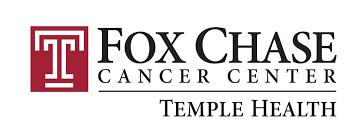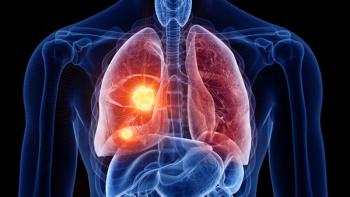
Exploratory Analysis Shows Histologic Subtype May Be Predictive of Immunotherapy Survival Benefit in Patients with Metastatic Nonsquamous NSCLC

Nivolumab/ipilimumab may offer superior overall survival to those with non–small cell lung cancer and solid tumor histology vs acinar histology.
Patients with solid histologic, metastatic, nonsquamous non–small cell lung cancer (NSCLC) experienced a long-term overall survival (OS) benefit with frontline nivolumab (Opdivo) and ipilimumab (Yervoy) compared with patients with NSCLC who have the acinar histologic subtype, according to exploratory analyses of the phase 3 CheckMate 227 study (Part 1; NCT02477826) and the phase 2 CheckMate 568 study (Part 1; NCT02659059). Results were presented at the 2023 European Lung Cancer Congress.
In CheckMate 227, at a median follow-up of 66.7 months, the median OS for patients receiving nivolumab and ipilimumab with solid tumors (n = 192) was 18.7 months (95% CI, 13.5-28.4) compared with 13.3 months (95% CI, 10.0-17.1) for those with acinar tumors (n = 91; HR, 0.60; 95% CI, 0.45-0.80). Patients with acinar tumors derived a greater benefit with chemotherapy with a median OS of 17.9 months (n = 85; 95% CI, 12.2-20.4) vs 13.4 months for those with solid tumors (n = 205; 95% CI, 10.5-16.2) (HR, 1.01; 95% CI, 0.77-1.32).
In CheckMate 568, the median OS for patients receiving the combination therapy with solid tumors (n = 77) was 26.5 months (95% CI, 14.6-47.3) vs 12.9 months (95% CI, 8.6-24.0) for patients with acinar tumors (n = 48) with a median follow-up of 71.3 months (HR, 0.67; 95% CI, 0.44-1.02).
“Frontline nivolumab plus ipilimumab provided greater OS benefit to patients with the solid histologic subtype than to those with the acinar histologic subtype—a similar pattern was observed in CheckMate 568 part 1,” Hossein Borghaei, DO, MS, chief of the Division of Thoracic Oncology, at Fox Chase Cancer Center, and coinvestigators, wrote in the poster. “In contrast, among patients treated with chemotherapy in CheckMate 227, OS was comparable between patients with the solid and the acinar histologic subtypes.”
As study authors noted in the poster, immunotherapy is considered the standard of care for first-line metastatic NSCLC. To that end, establishing biomarkers that predict outcomes with immunotherapy remain an unmet need, and clinicopathologic factors are thought to be potentially useful prognostic indicators. Solid and acinar are some of most common tumor histologic subtypes and solid subtypes are associated with poor prognoses.
Both trials enrolled patients with stage IV or recurrent NSCLC who had not received prior systemic therapy, did not have sensitizing EGFR mutations or known ALK alterations, and had an ECOG performance score of 0 or 1. Participants were stratified by squamous or nonsquamous histology.
In CheckMate 227, patients with PD-L1 expression greater or equal to 1% (n = 1189) were randomly assigned 1:1:1 to receive either nivolumab plus ipilimumab, chemotherapy alone, or nivolumab alone. Patients with PD-L1 expression less than 1% were randomly assigned to receive nivolumab plus ipilimumab, chemotherapy, or nivolumab plus chemotherapy. However, the analysis population used in this study were patients who received nivolumab plus ipilimumab, regardless of PD-L1 expression (n = 340) and those who had received chemotherapy, regardless of PD-L1 expression (n = 335).
The CheckMate 568 analysis population included those who had received nivolumab plus ipilimumab, regardless of PD-L1 expression (n = 170).
Baseline characteristics were generally similar among analysis populations as well as tumor histologic subtypes. In the CheckMate 227 analysis, the intention-to-treat (ITT) population had a median age of 64 years (26-87); 33% were women, most had an ECOG score of 1 (65%), 85% were current or former smokers, 14% had never smoked, 22% had liver metastasis, and 27% had bone metastasis.
In CheckMate 568, the ITT population had a median age of 65 years (39-91), 51% were women, 62% had an ECOG score of 1, 91% were current or former smokers and 9% had never smoked; 20% had liver metastasis, and 14% had bone metastasis.
Ultimately, in the CheckMate 227 population, 838 were included in the nonsquamous NSCLC cohort (72% of ITT), and 675 were tumor histologic subtype evaluable (58% of ITT). In CheckMate 568, 213 were included in the nonsquamous NSCLC cohort (74% of ITT), and 170 were tumor histologic subtype evaluable (59% of ITT).
Following tumor histologic subtype assessment, a sample evaluation and pathologist consensus occurred with slides scored by 3 board-certified pathologists who had lung subspecialties and consensus by at least 2 pathologists was required.
Biomarker analyses were performed for PD-1 expression, tumor mutational burden and KRAS, TP53 and STK11 mutations, which were determined via the FoundationOne CDx assay, and the 4-gene inflammatory signature including the CD8A, STAT1, LAG3, and CD274 (PD-L1) genes which were assessed via RNA sequencing. Additionally, biomarker analysis was performed for differential gene expression and an enrichment analysis of hallmark gene sets was performed.
Patients with the solid subtype had higher PD-L1 expression and tumor mutational burden (TMB), lower numerical rates of KRAS and STK11 mutations, as well as a higher rate of TP53 mutations, had a pronounced inflammatory phenotype, and greater expression of inflammation-associated genes and hallmark gene sets when compared with the acinar histologic subtype.
Pooled tumor histologic subtype data from the trials showed that, among patients with solid tumors (n = 365), 31% had KRAS-mutant disease and 69% were KRAS wild-type; 15% had STK11-mutations and 85% were STK11 wild-type; and 64% had TP53 mutations and 42% were TP53 wild-type. In patients with acinar tumors (n = 141), 42% had KRAS-mutant disease and 58% were KRAS wild-type; 21% had STK11-mutations and 79% were STK11 wild-type; and 38% had TP53 mutations and 62% were TP53 wild-type.
In the all-randomized ITT CheckMate 227 analysis, among those receiving nivolumab plus ipilimumab, 32% of patients had a PD-L1 status of less than 1%, 68% had a PD-L1 status of 1% or greater, 34% had a PD-L1 status between 1% and 49%, 34% had a PD-L1 status greater than 50%; and no patients were not evaluable for PD-L1 expression.
In the all-randomized ITT CheckMate 568 analysis, among those receiving nivolumab plus ipilimumab, 41% of patients had a PD-L1 status of less than 1%, 48% had a PD-L1 status of 1% or greater, 24% had a PD-L1 status between 1% and 49%, 24% had a PD-L1 status greater than 50%; and 12% were not evaluable for PD-L1 expression.
Between the CheckMate 227 and CheckMate 568 populations, respectively, TMB status was less than 10 for 33% vs 17% of patients, 10 or greater for 26% vs 17%, and not evaluable for 42% vs 66%. Histologic subtype, respectively, was solid (34% vs 27%), acinar (15% vs 17%), other (6% vs 4%), not specified (3% vs 12%), and not evaluable (42% vs 41%).
Safety in both trials was consistent with prior reports and there were no new safety signals observed based on tumor histologic subtype with nivolumab and ipilimumab. In the CheckMate 227 analysis, any-grade treatment-related adverse events (TRAEs) occurred with nivolumab/ipilimumab in patients with solid tumor histology (n = 190) vs acinar tumor histology (n = 89) at a rate of 76% vs 78%. Among those receiving chemotherapy, the any grade TRAEs rates were 80% vs 81%,, respectively. Grade 3 or 4 events occurred at rates of 35% vs 28% with dual immunotherapy, compared with 31% vs 33% with chemotherapy, respectively. Investigators wrote that similar safety results were observed with the combination regimen in CheckMate 568.
Among those treated with nivolumab and ipilimumab, there were 4 deaths in the solid tumor group, because of pneumonitis (n = 3) and cardiac tamponade (n = 1), and there was 1 death in the acinar tumor group related to shock (n = 1). Three patients with solid tumor histology died in the chemotherapy arm because of febrile neutropenia with sepsis, interstitial pneumonia, and sepsis of unknown origin.
Investigators noted that the results are hypothesis generation and “support the use of first-line nivolumab/ipilimumab as treatment for patients with metastatic NSCLC, including those with solid tumor histology (a subtype associated with poor prognosis).
Reference
Borghaei H, Balli D, Paz-Ares L, et al. Efficacy of first-line nivolumab + ipilimumab by tumor histologic subtype in patients with metastatic nonsquamous NSCLC. Presented at: 2023 European Lung Cancer Congress; March 29-April 1, 2023; Copenhagen, Denmark.
Newsletter
Knowledge is power. Don’t miss the most recent breakthroughs in cancer care.




